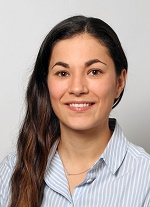Click here to stream the defence
Due to copyright issues, an electronic copy of the thesis must be ordered from the faculty. For the faculty to have time to process the order, the order must be received by the faculty at the latest 2 days before the public defence. Orders received later than 2 days before the defence will not be processed. After the public defence, please address any inquiries regarding the thesis to the candidate.
Trial Lecture – time and place
See Trial Lecture.
Adjudication committee
- First opponent: Senior Consultant Beata Graff, Medical University of Gdansk, Poland
- Second opponent: Associate Professor Emeritus/Senior Consultant Idar Kirkeby-Garstad, NTNU, Norway
- Third member and chair of the evaluation committee: Professor Mathis Korseberg Stokke, University of Oslo
Chair of the Defence
Professor Torsten Eken, University of Oslo
Principal Supervisor
Associate Professor Maja Elstad, University of Oslo
Summary
This thesis within cardiovascular physiology aimed to explore respiration-related variations in systemic and cerebral hemodynamics in the context of reduced venous return.
Steady-state and oscillatory lower body negative pressure (LBNP) induced abrupt, gradual, and respiration-synchronous variations in venous return in healthy humans. Hemodynamic data were collected by non-invasive methods. Frequency-domain and frequency-time domain analyses were employed to analyze hemodynamic fluctuations.
This thesis has illuminated different aspects of lung-heart-brain interactions. Reduced venous return induced by LBNP affected the respiratory variability in systemic and cerebral hemodynamics. However, changes in systemic hemodynamic variability at the respiratory frequency depended on when the LBNP was induced and released in relation to the respiratory cycle. Although dynamic cerebral autoregulation was functioning during respiration-synchronous oscillatory LBNP, it did not buffer the respiratory frequency variations in arterial blood pressure. This led to a small decrease in internal carotid artery blood flow, supporting the theory that dynamic cerebral autoregulation is frequency-dependent.
Additional information
Contact the research support staff.
